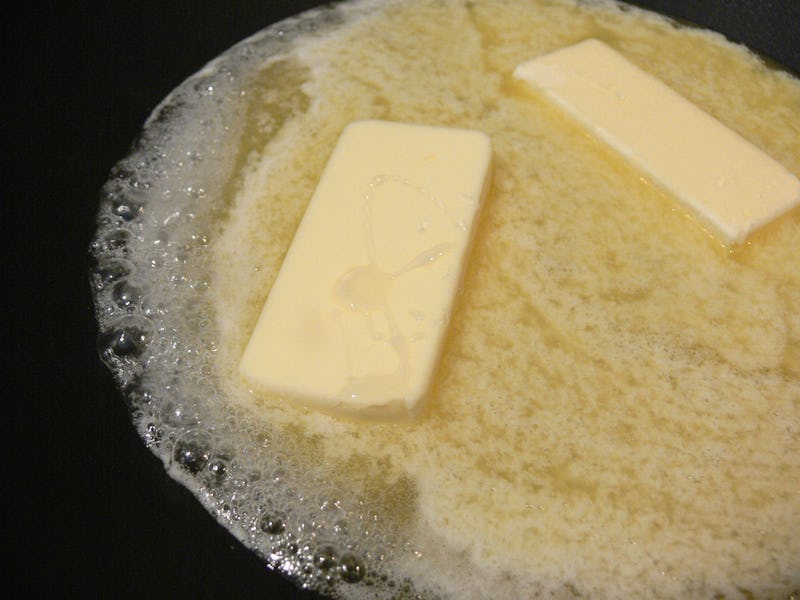Your Tastebuds Can Identify Fat: Oleogustus, the Sixth Taste
The name may be a mouthful, but points to a spectrum of possible tastes.

Names have power, as any high fantasy magician knows, and the nutritional wizards at Purdue Unversity have christened the sixth taste, the flavor of fatty acids: Behold oleogustus (Latin, naturally, for “fatty/oily” plus “taste”).
What makes a taste a Taste is a question people have wrestled with for the past two millennia. The Big Four, are, of course, sweet, salty, bitter, and sour, with umami (savory) making a much more recent debut. For a taste to get canonized is a tricky thing, but the criteria adopted by Purdue University nutritional scientist Richard Mattes and his colleagues include: that a taste has 1) its own biological receptors; 2) ecological importance; 3) unique molecular structures; and 4) a distinct precept or quality unlike other tastes.
The last pat of doubt that needed to be melted, Mattes tells Inverse, was that oleogustus was in fact a unique flavor. Previous studies, he said, had discovered a few of the receptors that bind to free fatty acid chains. (The sense of fat we’re most familiar with, as tripartite chains — triglycerides — is more mouthfeel than flavor. This is where the creaminess, lubricity, and viscosity comes into play, as Mattes points out, and it is also why the researchers minted a word separate from perceptions of “fatty.” And if oleogustus doesn’t quite glide off the tongue? Well neither, argues Mattes, does umami. To that end, the Purdue researchers had 102 subjects separate cups with different samples, including nonesterified fatty acids. In a few instances, these fatty acids were lumped in with bitter, but by and large the subjects isolated the fatty taste. The researchers concluded, as they wrote recently in the journal Chemical Senses, that:
Overall, these experiments provide definitive evidence that long chain fatty acids elicit a unique, perceptible sensation at concentrations relevant to our food supply. The concentrations of fatty acids tested are relatively high compared with those customarily encountered in the food supply, but levels of nonesterified fatty acids can reach concentrations in the low percentiles (5% = 0.18 M for oleic acid) in many fermented or rancid products, as well as in cooking oils (Chang and Chow 2008).
If oleogustus starts to sound unpleasant, well, that’s because it is. Mattes believes the rancidness of oleogustus acts in the same way as bitter — a heads up through the tongue that we probably shouldn’t swallow whatever’s in our mouths.
It remains to be seen if the rest of the world jumps on the oleogustus train, but Mattes is optimistic that efforts like these will broaden the scientific lexicon of taste. “By understanding this sensory system,” he said — and having the language to depict it — he’s hoping for new insights into why people eat the way they do. Plus, oleogustus could be simply a portent of more tastes to come. Other tastes rattling around the scientific chamber? That of calcium, the taste of starch, of water, and CO2.